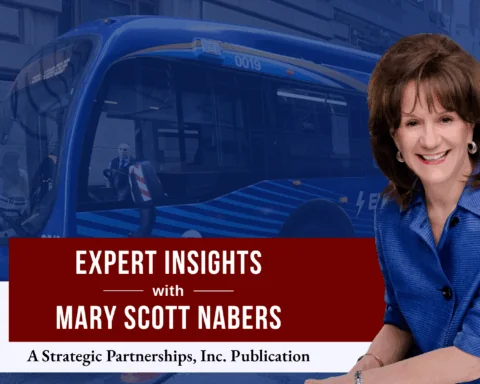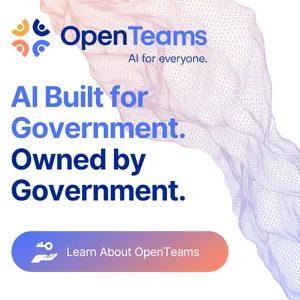Public-private partnerships (P3s) of all sizes and types are becoming more common throughout America and this type of project delivery model is being use for all types of initiatives. Many federal funding programs now require some amount of private-sector investment, and public officials, eager to launch critical projects, are routinely reaching out to contractors, developers and funding sources for partnerships.
There is no structural standard for a P3 project, but all have certain commonalities. There is a private-sector funding requirement of some sort and a planned repayment model or other incentives of some kind. One of the benefits of a P3 delivery method is that governmental entities can benefit from the type of expertise that is not available internally. And private-sector firms normally specialize in certain types of projects, so they can bring decades of experience to very large and complicated projects. Another benefit is that the private-sector partner assumes much of the risk that accompanies any large undertaking.
Some of the common types of P3 initiatives that tend to be extremely attractive now are wrapped around projects that result in revenue generation. When those types of projects are completed, revenue sharing is possible and public entities are able to boost economic development, improve critical infrastructure, and also add a new revenue stream into their coffers. However, a majority of large P3 projects currently being launched also involve some mode of transportation, water or power generation.
In 2025, contractors and developers can expect even more unique opportunities to be procured through a partnership delivery mode. Many P3 projects are currently in planning stages, and firms wanting to be selected as the private-sector partner can significantly increase their attractiveness by getting involved now in the activities. The following examples are all represent upcoming opportunities.
One example of the new and unique P3 opportunities that can be expected will be launched in Florida. Officials at the University of South Florida have announced plans for a major redevelopment of the school’s 120-acre Claw Golf Course. Plans call for a revitalization of this underutilized asset, which has been closed to the public for some time. The redevelopment project has attracted considerable support from stakeholders, the adjacent community and the university’s leadership, faculty and students. Although specific financial details are not completely finalized, this project will be extremely large because estimators are already saying that the redevelopment project’s cost could range from $1 billion to $3.5 billion as new facilities and other development plans are completed. Currently, the project is in the pre-procurement phase, but timelines and final planning documents will be completed soon.
Officials in Alexandria, Virginia, will soon launch a large affordable housing project that will be delivered through a P3 agreement. Hundreds of cities throughout the U.S. are experiencing extremely high demand for affordable housing, and many government officials are partnering with developers and contractors to remedy the problem. Projects that are delivered through a P3 contract are becoming more common with every passing year and transit-oriented development is eligible for historic funding support. The Alexandria project will get financial support from the city – about $50.6 million, and the partnership will deliver 373 new residential units. But that is not all! Plans call for the homes to be surrounded by retail, a daycare facility and other community support buildings. As of October 2024, there has been no competition for the partnership role, and while that is somewhat surprising, there’s no doubt that there will be competition for that contracting opportunity. The area selected for the phased development will require infrastructure upgrades before construction can begin so this opportunity will roll into 2025.
Transit-oriented development projects will be abundant over the next several years, and many cities and counties are solving their housing needs by working with developers to launch community-oriented housing facilities near public transportation stations. Billions in federal funding are readily available, and these types of projects are almost always delivered through a P3. Many of the housing developments also include retail, community libraries and healthcare facilities. In every large city, there are opportunities currently for this type of development. City leaders in Austin, Texas, are currently planning a transit- oriented development and will seek a private-sector partner.
More traditional P3 projects related to transportation are available throughout America. A multi-billion-dollar transportation project has been announced as a public-private partnership in Nashville, Tennessee. This work will be focused on Interstate 24, and the objective will be to reduce traffic congestion and improve travel time reliability across a 26-mile stretch of roadway between Nashville and Murfreesboro. Optional managed lanes will be added so motorists are afforded the option of paying a toll to avoid congestion and maintain constant vehicle speed during high traffic times. When completed, the effort will improve regional connectivity, enhance multimodal mobility and support growth in one of the state’s busiest corridors.
Environmental studies are currently underway, and a solicitation process will begin in 2025, but construction will likely not begin until 2027. The selected private-sector partner will be required to design, construct, finance and maintain the lanes as part of the final P3 contract.
Just this month, a large transportation project was approved by city leaders in Charlotte, North Carolina. When completed, this project will represent the largest highway P3 in the state. It has been tagged with an estimated project cost of over $3 billion, and will move forward following a second vote of support by the Charlotte Regional Transportation Planning Organization.
The project will include the construction of 11 miles of express lanes to alleviate congestion and improve mobility for commuters. A P3 project delivery method was selected as officials considered the most financially viable and efficient delivery option. The state DOT will assist and prioritize the plan over the next eight to 10 months before a procurement process begins. An RFQ will be issued to solicit private-sector partners in 2025 to design, build, finance, operate and maintain new express lanes.
Companies that are interested in pursuing P3 engagements can get more detailed information from planning documents, budgets and/or funding that has been received from the federal government.
Photo courtesy Famartin













